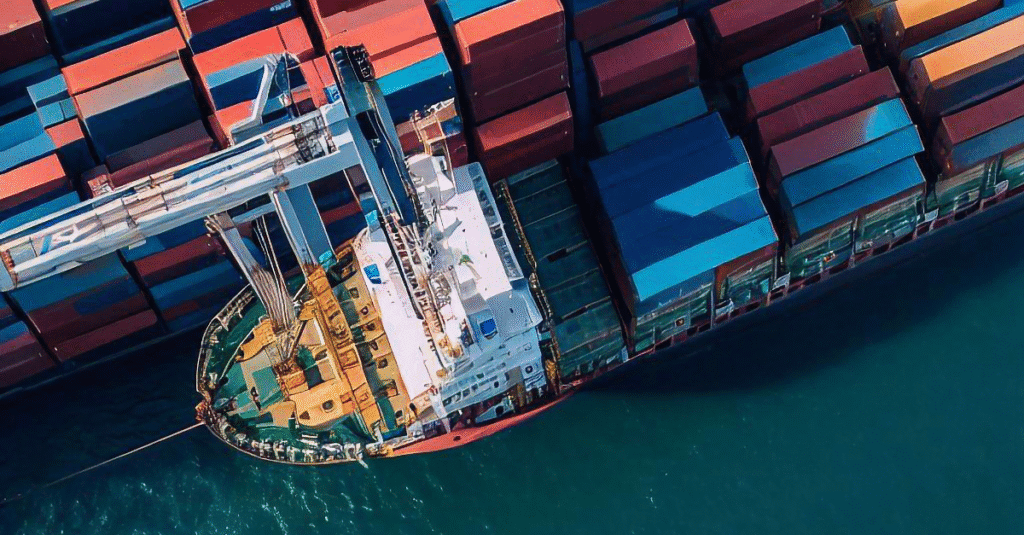2. A transit occurs where the products enter and exit the EU, without the products being received by the EU or entry onto the EU market, or where a consignment passes through an EU member state prior to reaching its final EU destination. A direct export occurs where the products enter the EU and are received by the EU for entry onto the EU market.
3. For example, a composite (e.g. pork pie) exported whole that is re-packaged at a deli counter for sale to the final customer. Bulk products exported for further processing are not in scope.
All exporters using the groupage scheme must source all of their products from a reputable supplier list. Products that have been frozen or are undergoing processing laster longer than six months (e.g. cheese undergoing maturing) may be covered by an SA provided that the relevant health and traceability details (as required by the Export Health Certificate) for any products supplied to the exporter in the six month period are suitably stable.
Groupage exporters must use the following wording as detailed within Annex II.
This document may only be used to facilitate EU export certification of groupage consignments of specific categories of products (including as required under the Northern Ireland Protocol for GB to NI movements of goods)
These categories are products of animal origin (POAO) for human consumption as listed below and processed pet food that is fully packaged for the final consumer (or purchase in the case of pet food), or to be re-packaged directly at the point of sale to the final consumer. They are products that are produced using only animal content from a traceable network of known suppliers. Included: Composite products 6, meat products 7, meat preparations 8, processed milk/matured or processed dairy products, fish/fisheries products, eggs/egg products, processed pet food, honey, frogs’ legs, snails and live bivalve molluscs. Excluded: Live animals, germinal products, fresh meat, raw milk, animal by-products (including raw pet food but excluding processed pet food). Some of these products may be included within a groupage consignment, but they must have been separately certified without the use of a 30 day SA.
SA’s must be fully completed and signed by a suitable representative of the supplying company, and a registered vet, FCCO or CSO acting under the direction of the CO.
UNIQUE DOCUMENT REFERENCE NUMBER (12) …………………………………. I. Supplier declaration I …………………………………………………………………….. (full name), being……………………………………………………..(official position in the company) of ………………………………………………………………………………………………… (name and address of supplying company), have authority and responsibility to sign this declaration on behalf of this supplying company. I hereby declare that the details in sections A and B below includes a complete list of the products of animal origin contained within the products to which this Support Attestation relates supplied to …………………………………………….. (company name of exporter). I confirm that the information within this support attestation is correct and that no changes will be made to affect its validity prior to its date of expiry. I will ensure that the registered veterinarian* / CSO (Certification Support Officer)* / Food Competent Certifying Officer signing the attestation in section II and the exporter listed above are immediately informed if any changes are made that affect the validity of this document and/or if I leave the employment of the supplying company detailed above. I understand that in such cases this support attestation will immediately become null and void. I understand that supplying false or misleading declarations that will be relied upon by the exporter in respect of the verifications provided in the relevant export health certificate is an offence and may result in rejection of the exported product and immediate removal of the exporter from the Groupage Export Facilitation Scheme as well as risk of liability for costs incurred. I will ensure that each consignment of products sent to the export depot that is covered by this support attestation is accompanied by a declaration signed on behalf of the supplying company and stating that “The evidence required to facilitate export of 12 A unique reference number must be given to each original support health attestation used. Suggested format: unique supplier number/sequential number/ unique number for vet, FCCO or CSO signing part II /year (e.g.: 15435/0000001/m159607/2019) 16 the products in this consignment has been provided in Support Attestation …. [insert unique reference number as above]. No changes have been made that affect the validity of the information provided in this Support Attestation.” A. Details of product(s): 1. Origin and Destination a) Address and, if available, Approval* / Registration Number* of the establishment(s) from which the consignment will be dispatched (e.g. supplier) : ……………………………………………………………………………………………………………………. ……………………………………………………………………………………………………………….
b) Address and, if available, Approval* / Registration Number* of the establishment(s) to which the consignment will be dispatched (e.g. exporting depots): ……………………………………………………………………………………………………………………. ……………………………………………………………………………………………………………….
2. Description of the product(s) Product specific details of all products to which this support attestation relates (this may be attached as a schedule): ……………………………………………………………………………………………………………………. ……………………………………………………………………………………………………………….
B. Traceability information: [INSERT REQUIRED INFORMATION RELATING TO ALL PRODUCTS LISTED ABOVE (IN A.2) AS AGREED WITH THE CERTIFYING OFFICER RESPONSIBLE FOR EXPORT CERTIFICATION] Authorised by Name:
Signature:
Position:
Date:







